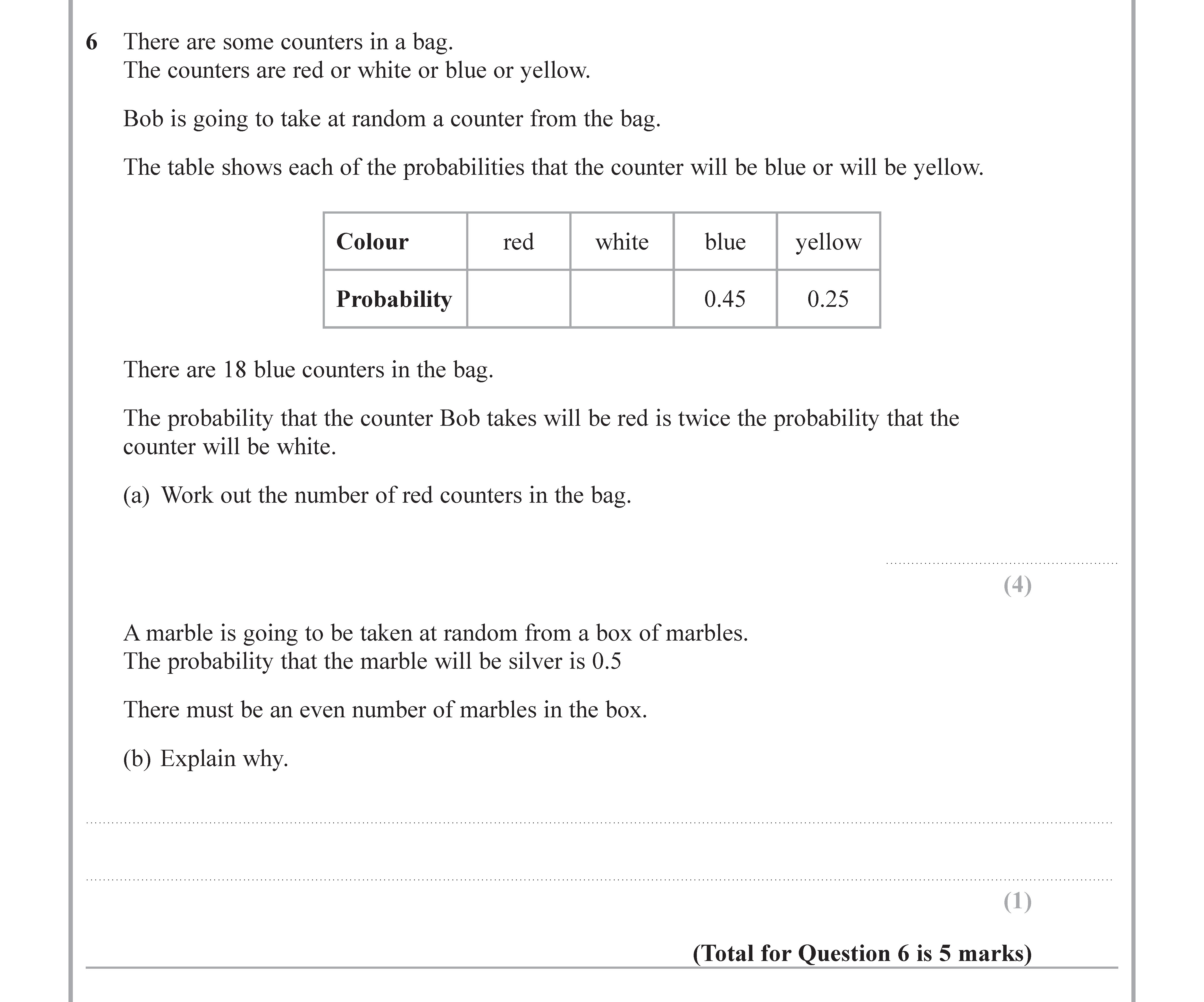Photo AI
There are some counters in a bag - Edexcel - GCSE Maths - Question 7 - 2018 - Paper 3
Question 7

There are some counters in a bag. The counters are red or white or blue or yellow. Bob is going to take at random a counter from the bag. The table shows each of th... show full transcript
Worked Solution & Example Answer:There are some counters in a bag - Edexcel - GCSE Maths - Question 7 - 2018 - Paper 3
Step 1
Work out the number of red counters in the bag.
Answer
To find the total number of counters in the bag, we first note the probabilities given in the table for each color:
- Probability(red) = 0.45
- Probability(white) = 0.10
- Probability(blue) = 0.25
- Probability(yellow) = 0.25
Using the information provided, knowing that the total probability must equal 1, we can derive:
Substituting the known probabilities:
Solving for :
Now we know the probabilities for red, white, blue, and yellow counters. Let the total number of counters be denoted as . The number of each type of counter can be expressed as:
- Red counters =
- White counters =
- Blue counters = 18 (given)
- Yellow counters =
Next, we need to find the relationship between red and white counters. The problem states that the probability of red is twice that of white:
P(red) = 2 imes P(white) \ 0.45 = 2 imes (0.10) \
Now substitute and sum:
Finally, substituting back to find the number of red counters:
however, since we cannot have a fraction of a counter, we conclude:
- There are 32 red counters in the bag.
Step 2
Explain why.
Answer
The probability that the marble will be silver is 0.5, which indicates that there are an equal chance of selecting a silver or a non-silver marble from the box. For a probability of 0.5 to hold true, the total number of marbles must be even. This is because probabilities are calculated based on the ratio of favorable outcomes to total outcomes. Having an even number ensures that half of the marbles can consistently represent each color (silver vs. non-silver). Therefore, it’s impossible to have a scenario where one color (silver) is represented just as equally as another (non-silver) if there isn’t an even number of total marbles. Hence, there must be an even number of marbles in the box.
